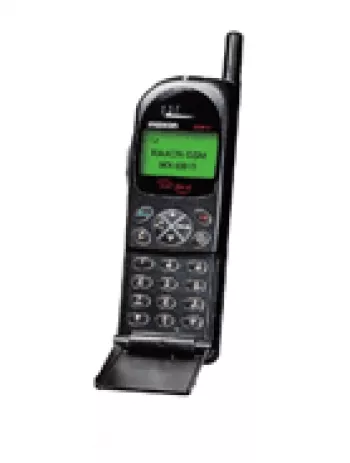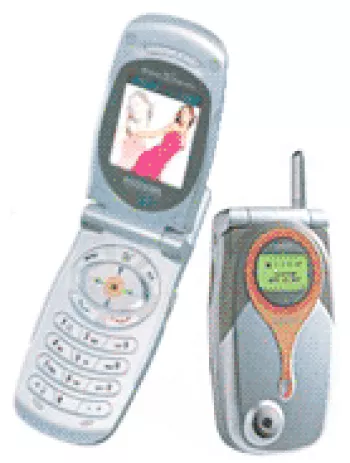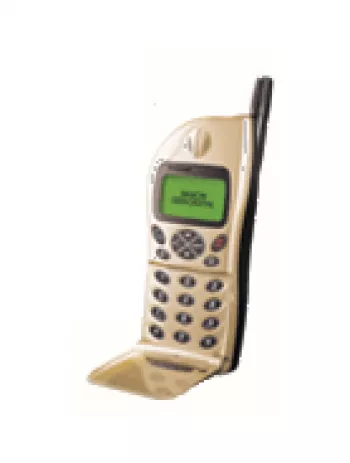
Overview of the Maxon MX-6815
The Maxon MX-6815 is a classic example of early mobile phone technology. Released in 1999, it was amongst the pioneering devices in the feature phone category. With its basic functionalities, it reflected the priorities and technological capabilities of the late 1990s. In this article, we will delve into the details of the Maxon MX-6815's specs, design, and user experience, explaining how each aspect contributed to its usage during its prime time.
Network Capabilities
The device operates on GSM 900 technology, which was the standard for mobile communication during its time. Unlike today’s smartphones, the Maxon MX-6815 does not support GPRS or EDGE, focusing instead on simpler voice communication. The absence of data services like GPRS reinforces its role as a basic telephony device intended for voice calls and SMS.
Launch and Market Status
Announced in 1999, the Maxon MX-6815 quickly became obsolete as mobile technology advanced. By the early 2000s, it was officially discontinued as more technologically advanced devices flooded the market. Its release in the late 90s positioned it firmly as a transitional device between early mobile phones and the more innovative models of the 21st century.
Design and Build
With dimensions of 110 x 46 x 23 mm and a weight of 96g, the Maxon MX-6815 is compact by today’s standards. It featured a classic design typical of 90s mobile phones, with a simple interface and physical keypad. It uses a Mini-SIM, which was the norm before micro and nano-SIMs were introduced. Its light weight made it portable and easy to carry around in the pocket or bag.
Display Characteristics
The Maxon MX-6815 features a monochrome graphic display, which was common for phones of its era. The display resolution supports 4 x 12 characters, which may appear limited by today’s standards. However, the simple text-based display was adequate for its primary functions of making calls and sending simple texts.
Memory and Storage
This phone does not support external memory or a card slot, reflecting its design as a basic device. It maintains a call record of up to 20 dialed calls, a feature that focuses on essential telephony functions without additional storage options. These limitations are typical of feature phones, which prioritize simplicity over extensive functionality.
Sound Features
Sound capabilities are limited to monophonic ringtones, without a loudspeaker or a headphone jack. The emphasis remains on basic auditory communication rather than multimedia. The absence of a 3.5mm jack illustrates its simplicity and focus on more straightforward functionalities, underscoring its role as a device for communication rather than entertainment.
Communication Features
In terms of connectivity, the Maxon MX-6815 does not support WLAN or Bluetooth, which limits its capability for wireless connectivity. It does not feature any positioning technology or built-in radio, and there’s no USB connectivity, indicating a device that relies primarily on cellular networks for communication.
Additional Features
Though basic, the Maxon MX-6815 does come with an alarm and clock functions, which were essential even in the simplest of devices. SMS is supported, providing basic text communication. However, it does not support advanced features like Java for mobile apps, nor does it include any built-in games or browser functionalities.
Battery Life
The device is powered by a removable NiMH 850 mAh battery, capable of offering up to 130 hours of standby time and about 3 hours of talk time. Although these numbers might seem modest, they were sufficient for daily use during the late 90s, emphasizing durability and convenience with the ability to replace batteries easily.
User Experience and Cultural Impact
As a feature phone, the Maxon MX-6815 provided an easy-to-use interface for users who needed a reliable device for calls and texts. During its time, it contributed to the growing trend of mobile phone usage by making basic telecommunication accessible. Its legacy lies in its simplicity and effectiveness in providing an essential service without the complexities of modern smartphones.
Conclusion
In summary, the Maxon MX-6815 serves as a quintessential illustration of early mobile phone design and usage. Despite being discontinued, it remains a reflection of the technological constraints and user needs of its time. While it doesn't offer the high-tech features of modern smartphones, its role in the development of mobile technology is significant. From its network capabilities to battery life, each aspect of the Maxon MX-6815 paints a picture of a bygone era in mobile communication.
Key Features of Maxon MX-6815
- GSM technology support
- Compact dimensions: 110 x 46 x 23 mm
- Lightweight design: 96 g
- Monochrome graphic display with 4 x 12 characters resolution
- Mini-SIM compatibility
- SMS messaging capabilities
- Includes essential features: Clock and Alarm
- Removable NiMH 850 mAh battery
- Stand-by time of up to 130 hours
- Talk time of up to 3 hours
Maxon MX-6815 Disadvantages
- Outdated GSM technology, limited to GSM 900 band only.
- No GPRS or EDGE support for mobile data connectivity.
- Discontinued model, making it difficult to find support or replacements.
- Monochrome graphic display with minimal resolution (4 x 12 chars).
- No expandable memory card slot for additional storage.
- Limited call records memory, only 20 dialed calls.
- Lacks camera capability.
- No loudspeaker for hands-free use.
- No 3.5mm headphone jack for audio output.
- Absence of modern connectivity options like WLAN, Bluetooth, and USB.
- No GPS positioning or radio feature.
- No capability for Java applications.
- Limited battery life with only 3 hours of talk time and 130 hours standby.
View Also
More Phones
All Rights Reserved +14266 Phones © Mobilawy 2025
























